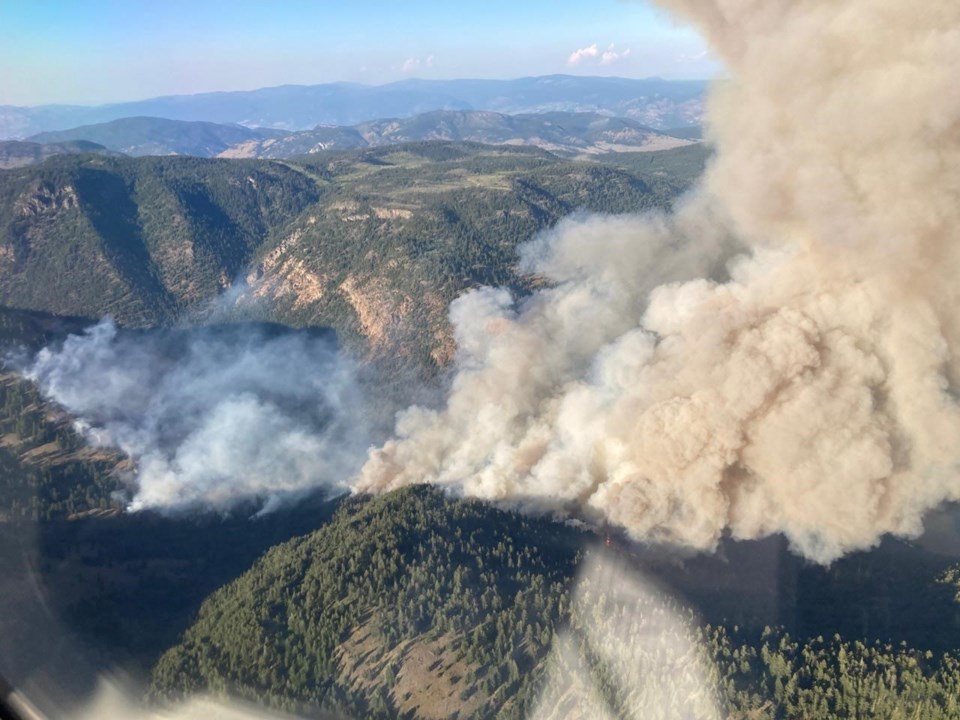KEREMEOS, B.C. — A wildfire on the fringes of British Columbia's southern Okanagan has grown.
The BC Wildfire Service said the blaze, which is about 21 kilometres southwest of Penticton, is now nearly 60 square kilometres in size.
Mikhail Elsay, information officer for the BC Wildfire Service, said the warm and dry weather is leading to an increase in fire activity.
The Regional District of Okanagan-Similkameen's emergency operations centre said more than 500 properties are under an evacuation order. People living in over 1,000 other properties have to be ready to leave on short notice.
The district is asking people to restrict use of sprinklers and not leave them running.
It said heavy water use can hurt smaller systems and may hinder firefighting.
While the higher temperatures have calmed the winds, Elsay said the increase in fire has caused more smoke.
"There's certain portions of the fire that are quite smoky," he said.
The current wind direction is sending the smoke south to the United States, he added.
"The valley bottoms are actually still relatively smoke free at this time," Elsay said.
"But if the wind shifts, we could end up seeing more smoke in the valleys."
Juli Carrillo, an assistant professor at the University of British Columbia who studies insect behaviour, said smoke can make it hard for these creatures to find the plants they feed on, and masks their sense of smell.
"Wildfires can destroy or reduce the quality of insect host plants, which means insects will have to move in order to survive," she said.
"Heat and drought accompanying wildfires can be hard to tolerate for insects, which often need humidity and water sources, or could kill them outright."
Elsay said the blaze near Penticton has shown "pretty aggressive fire behaviour at night, which is a challenge to crews."
"That is a common trend for the fires that we're seeing, especially during July and August where the days are super long, and the temperatures are super high."
This report by The Canadian Press was first published Aug. 6, 2022.
The Canadian Press



